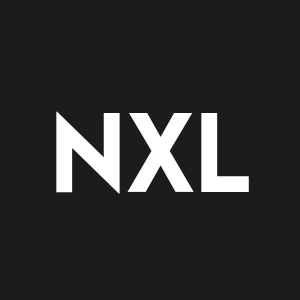Nexalin Technology Awarded Key Patent Related to its Non-Invasive, Frequency-Based Deep-Brain Stimulation Device for the Treatment of Alzheimer’s and Dementia
Rhea-AI Summary
Nexalin Technology announced that the USPTO has awarded it U.S. Patent No 12,011,591 for its non-invasive Deep Intracranial Frequency Stimulation (DIFS®) device, designed to treat Alzheimer's and dementia-related diseases. The patent covers the Gen-2 and Gen-3 devices that use a proprietary frequency-based waveform for pain-free, undetectable brain stimulation. The global dementia treatment market is projected to grow from over $18 billion to $28 billion by 2030. The device also holds potential for other mental health disorders, including depression, migraines, anxiety, insomnia, addiction, and PTSD. The new patent enhances Nexalin's intellectual property portfolio and reflects significant advancements over the Gen-1 system. CEO Mark White emphasized the importance of this milestone, highlighting the growing need for innovative treatments in the expanding dementia market.
Positive
- Awarded U.S. Patent No 12,011,591 for DIFS® device.
- Global dementia market projected to reach $28 billion by 2030.
- Device offers pain-free, undetectable brain stimulation.
- Potential to treat various neurological diseases beyond dementia.
- Significant advancement over Gen-1 system.
Negative
- No immediate financial impact reported.
- Market competition and regulatory challenges could affect commercialization.
News Market Reaction 1 Alert
On the day this news was published, NXL gained 5.77%, reflecting a notable positive market reaction.
Data tracked by StockTitan Argus on the day of publication.
HOUSTON, TEXAS, June 20, 2024 (GLOBE NEWSWIRE) -- Nexalin Technology, Inc. (Nasdaq: NXL; NXLIW) (the “Company” or “Nexalin”) today announced that the United States Patent and Trademark Office (USPTO) has awarded U.S. Patent No 12,011,591 relating to the Company’s non-invasive Deep Intracranial Frequency Stimulation (DIFS®) medical device for the treatment of Alzheimer’s and other dementia-related brain diseases. The newly issued patent entitled, “Transcranial Alternating Current Dynamic Frequency Stimulation (TACS) Method for Alzheimer’s and Dementia,” relates to the Company’s Gen-2 and Gen-3 brain stimulation medical device that administers a proprietary frequency based waveform that is designed to effectively treat patients in a pain free and undetectable manner.
Mark White, CEO of Nexalin Technology, stated, “The award of this patent marks another major milestone for the Company, as we expand our intellectual property to include the treatment of Alzheimer’s and dementia. According to Grandview Research, the global dementia treatment market is estimated to be in excess of
The Gen-2 and Gen-3 medical device reflects the state-of-the-art development of Nexalin’s Deep Intracranial Frequency Stimulation (DIFS®) technology, and a significant advancement to the predecessor Gen-1 system. The Company’s new neuro-technology marks a digital breakthrough in electrical waveforms to provide a deep undetectable non-invasive brain stimulation technique that is designed to be safe, risk-free and highly effective. The Gen-2 and Gen-3 stimulation technique relies on the placement of strategically positioned electrodes on the patient’s cranium, and provides deep stimulation to regions of the brain associated with mental health conditions.
About Nexalin Technology, Inc.
Nexalin designs and develops innovative neurostimulation products to uniquely and effectively help combat the ongoing global mental health epidemic. All of Nexalin’s products are non-invasive and undetectable to the human body and developed to provide relief to those afflicted with mental health issues. Nexalin utilizes bioelectronic medical technology to treat mental health issues. Nexalin believes its neurostimulation medical devices can penetrate structures deep in the mid-brain that are associated with mental health disorders. Nexalin believes the deeper penetrating waveform in its next-generation devices will generate enhanced patient response without any adverse side effects. The Nexalin Gen-2 15 milliamp (mA) neurostimulation device was recently approved in China by the National Medical Products Administration (NMPA) for the treatment of insomnia and depression. Additional information about the Company is available at: https://nexalin.com.
FORWARD-LOOKING STATEMENTS
This press release contains statements that constitute "forward-looking statements," These statements relate to future events or Nexalin’s future financial performance. Any statements that refer to expectations, projections or other characterizations of future events or circumstances or that are not statements of historical fact (including without limitation statements to the effect that Nexalin or its management “believes”, “expects”, “anticipates”, “plans”, “intends” and similar expressions) should be considered forward looking statements that involve risks and uncertainties which could cause actual events or Nexalin’s actual results to differ materially from those indicated by the forward-looking statements. Forward-looking statements are subject to numerous conditions, many of which are beyond the control of the Company, including those set forth in the Risk Factors section of the Company's Report on Form 10-K for the year ended December 31, 2023 and other filings as filed with the Securities and Exchange Commission. Copies of such filings are available on the SEC's website, www.sec.gov. Such forward-looking statements are made as of the date hereof and may become outdated over time. Such forward-looking statements are made as of the date hereof and may become outdated over time. The Company undertakes no obligation to update these statements for revisions or changes after the date of this release, except as required by law.
Contact:
Crescendo Communications, LLC
Tel: (212) 671-1020
Email: NXL@crescendo-ir.com









